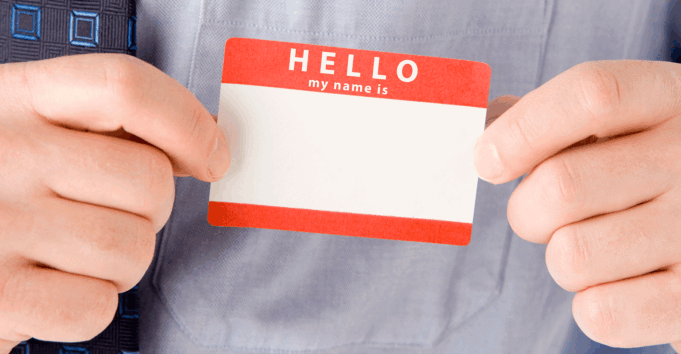Networking events provide valuable opportunities for individuals to connect, build relationships, and expand their professional circles. In these bustling environments, where countless conversations occur simultaneously, it can be challenging to remember names and affiliations. This is where name badges and nameplates play a crucial role. These small but mighty tools enhance communication, facilitate networking, and promote professionalism. In this blog post, we will delve into the various ways name badges and nameplates contribute to the success of networking events and highlight their importance as valuable networking tools.
Enhancing Communication

Thservesrve as a powerful conversation starter, breaking down barriers and encouraging interaction. By displaying one’s name prominently, these badges make it easy for event attendees to address each other with familiarity and warmth. When participants can identify one another quickly, they are more likely to engage in meaningful conversations. Name badges, including reusable nameplates, eliminate the awkwardness of forgetting someone’s name and enable attendees to approach one another with confidence. In this way, these small accessories create a welcoming and inclusive atmosphere, setting the stage for fruitful networking interactions. Reusable name badges provide an eco-friendly solution that not only fosters connections but also aligns with sustainable practices, enhancing the overall experience of networking events.
Networking Facilitators

In the bustling environment of networking events, where countless professionals converge, name plates serve as essential networking facilitators. These simple yet effective tools play a crucial role in ensuring easy identification and recall of participants.
- Effortless Identification: They are typically placed on tables or display stands, providing a clear visual reference for attendees. By showcasing individuals’ names, titles, and affiliations prominently, they make it effortless for event participants to identify and locate specific individuals they may wish to connect with. This convenience saves time and eliminates the need for awkward introductions or inquiries about someone’s identity.
- Streamlining Connections: They make connecting a simple process because they are so easily accessible. Attendees can look around the space and identify people right away based on the information provided. Making it easier for participants to find individuals who have similar professional interests or areas of expertise, streamlines connections, and promotes targeted networking. Making targeted and significant relationships improves the networking process as a whole.
- Recalling Key Information: These events often involve meeting numerous people in a short period, making it challenging to remember everyone’s names and affiliations. They act as memory aids, helping participants recall crucial details when following up or engaging in subsequent conversations. By associating names with faces and affiliations, participants can build stronger relationships and continue meaningful discussions beyond the event.
- Facilitating Event Navigation: They not only assist individual attendees but also aid event organizers in managing the logistics. By strategically placing them, organizers can create an organized layout that helps participants navigate the event space more effectively. This layout can include designated areas for specific industries, job titles, or discussion topics, making it easier for individuals to connect with like-minded professionals.
Breaking the Ice
Events for socializing can occasionally be frightening, especially for people who are inexperienced or inherently shy. They reduce these fears by fostering an environment that is welcoming and approachable. Attendees feel more at ease striking up talks when they can quickly recognize each other’s names. They promote a favorable social environment where people are more willing to connect and share thoughts by encouraging a sense of familiarity and friendliness. These little extras can turn a room full of strangers into a friendly group of businesspeople.
Promoting Professionalism
Nameplates play a vital role in promoting professionalism and establishing trust among event attendees. When participants see it displaying someone’s name, title, and organization, it signals credibility and expertise. This visual cue enhances the professional image and reputation of individuals, making it easier for others to trust and engage with them. They lend an air of authority and expertise to participants, reinforcing the notion that networking events are spaces where serious professionals come together to forge valuable connections.
Efficient Networking

A flurry of introductions frequently occurs during networking events as attendees try to meet as many people as they can in the allotted time. They facilitate this procedure by giving quick access to crucial data. Attendees can rapidly determine the identity, firm, and possibly even a particular job or area of expertise of the individual in front of them by quickly identifying that person’s title and tag. The more concentrated and effective networking made possible by this time-saving information exchange, participants can quickly find new partners or useful contacts.
Building Relationships
Building meaningful relationships is a core objective, and nameplates play a crucial role in this endeavor. As attendees engage in conversations and exchange business cards, it can be challenging to remember everyone’s name and affiliation. They act as memory aids, helping individuals recall and associate names with faces and organizations.
Personal Branding

Networking events offer individuals the opportunity to showcase their brand and make a lasting impression. They become a medium for self-promotion, allowing participants to display not only their name but also their logo, tagline, or personal branding elements. By leveraging these visual cues, individuals can reinforce their unique selling points and stand out in a sea of professionals. Well-designed title badges can be memorable conversation starters and leave a lasting impression on potential collaborators, clients, or employers.
Networking Event Logistics
They not only help attendees individually, but they also help event planners manage the logistics of networking gatherings. Those badges should be strategically placed so that participants can easily find the appropriate people or groups. This will help the event run more smoothly. By assisting with seating arrangements, panel discussions, or group activities, they also assist with event planning. Additionally, they help event workers properly address participants and give them a more customized experience.
Conclusion
In the realm of networking events, name badges, and plates play pivotal roles in enhancing communication, facilitating connections, and promoting professionalism. These unassuming tools go beyond mere identification; they create a friendly atmosphere, streamline introductions, aid in relationship building, and even serve as a means of personal branding. For both event attendees and organizers, name badges and plates are invaluable assets that contribute to success and effectiveness. So, the next time you attend a networking event, remember the power and significance of these small accessories and wear them proudly as you navigate the world of professional connections.















